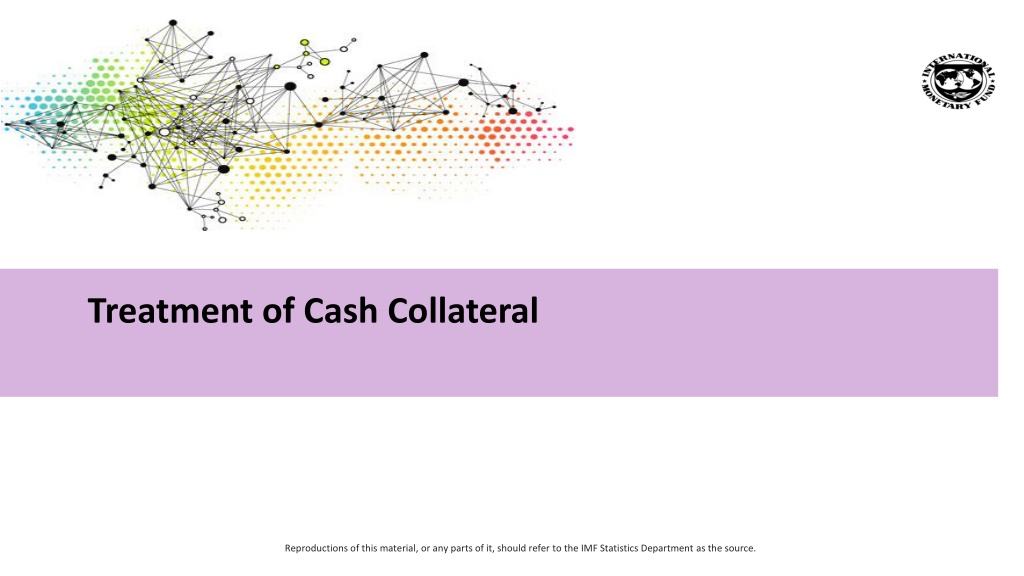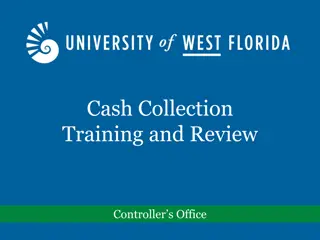Treatment of Cash Collateral
Overview of the treatment of cash collateral in BPM6, 2008 SNA, and ESA 2010, as recommended by De Nederlandsche Bank and Statistics Netherlands. Consistent classification methods and implications for monetary and financial statistics manuals are discussed. BOPCOM decision on proposed changes and query for placement on the SNA Research Agenda.
Download Presentation

Please find below an Image/Link to download the presentation.
The content on the website is provided AS IS for your information and personal use only. It may not be sold, licensed, or shared on other websites without obtaining consent from the author.If you encounter any issues during the download, it is possible that the publisher has removed the file from their server.
You are allowed to download the files provided on this website for personal or commercial use, subject to the condition that they are used lawfully. All files are the property of their respective owners.
The content on the website is provided AS IS for your information and personal use only. It may not be sold, licensed, or shared on other websites without obtaining consent from the author.
E N D
Presentation Transcript
Treatment of Cash Collateral Reproductions of this material, or any parts of it, should refer to the IMF Statistics Department as the source.
Overview Query from De Nederlandsche Bank to BOPCOM Differences in the methodological treatment of cash collateral (repayable margin) in the BPM6 and 2008 SNA on one hand, and the ESA 2010 on the other. De Nederlandsche Bank and Statistics Netherlands came to the conclusion that the treatment in ESA 2010 seems to be most in line with the characteristics of cash collateral in practice. 2
Consistent Treatment in BPM6 and 2008 SNA BPM6: Repayable margin payments in cash are classified as deposits (if the debtor s liabilities are included in broad money) or in other accounts receivable/payable. 2008 SNA: Repayable margin payments in cash are transactions in deposits, not transactions in a financial derivative. The depositor has a claim on the exchange or other institution holding the deposit. Some compilers may prefer to classify these margins within other accounts receivable or payable in order to reserve the term deposits for monetary aggregates. ESA 2010: Repayable margin payments for which the debtor s liabilities are not included in broad money should be recorded as a loan (unless the counterpart is a monetary financial institution). 3
Other Statistical Manuals The treatment in BPM6 and SNA2008 is also consistent with that in the Monetary and Financial Statistics Manual and Compilation Guide (MFSMCG) and in the Government Finance Statistics Manual (GFSM2014). Monetary and financial statistics stress that these collateral guarantees should not be included in credit/lending aggregates. Other accounts receivable/payable do not only record balance sheet items that result from timing differences (as the note suggests), but also include miscellaneous asset items (see paragraph 4.194 of the MFSMCG). 4
BOPCOM Decision BOPCOM written consultation Agreed: The proposed change goes beyond a simple clarification and would require a change in the text of the Manuals. The issue will be placed on the BPM research agenda to be considered during the next BPM update. Requested that the AEG do the same. 5
Question for the AEG Do members agree the issue be placed on the SNA Research Agenda. 6

 undefined
undefined

























